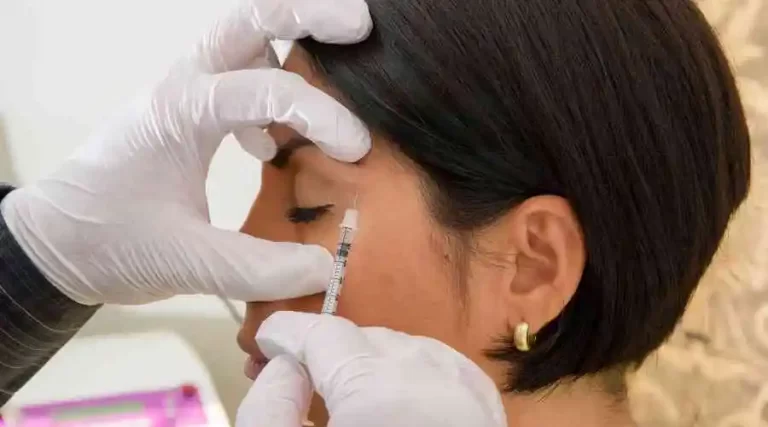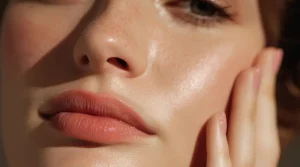Botox is a prescription-only muscle relaxant used to temporarily smooth facial expression and reduce wrinkles and involuntary muscle movements, such as those that cause lines in the forehead between eyebrows and crow’s-feet around the eyes.
Most procedures take place at a doctor’s office or a medical facility where an intravenous injection of Botox (also sold as a generic drug) can be administered directly into muscles under voluntary control. Injections typically last 3 to 6 months and may be repeated if necessary to maintain optimal results.
In addition to its efficacy in cosmetic procedures, another application has emerged: spas offer it as a hydrating alternative to air-drying or chemical peels.
Top 5 Things to Know About Botox
It is a Botulinum Toxin
Botulinum toxin is produced by the bacterium Clostridium botulinum. This neurotoxin, or nerve poison, causes paralysis of the muscles it contacts. Some people who have the injections experience temporary muscle weakness or fatigue months after treatment. Injections of Botox may also cause headaches, nausea, and eyelid drooping. Other side effects reported include:
- Facial flushing (a bluish-white rash).
- Dry, itchy eyes.
- An intense sensation of heat and water comes on suddenly and can last several hours.
- Itching may occur on the scalp, behind the ears, and inside the nose. The discomfort of these side effects is usually mild, with most people able to continue working without interruption while experiencing them.
Has Multiple Uses
It is used for various conditions and the treatment of several medical problems. It’s most commonly used to improve the appearance of facial wrinkles that develop when the muscles under facial skin contract, leaving fine lines and creases. The effects are temporary, but it can smooth these furrows as long as it is regularly administered in small quantities.
In addition to cosmetic uses, it is also used in treating chronic migraines and other types of chronic pain caused by muscle use. Suppose a person experiences regular headaches or discomfort from overusing a specific muscle. In that case, Botox injections can stop that muscle from contracting to reduce or even eliminate discomfort or pain.
Effective for More Than Just Wrinkles
It is used to treat eye movement abnormalities. One of them is blepharospasm, a condition that makes it challenging to keep the eyelids from moving in an upward, downward, or sideways direction. Migraine headaches and chronic pain may also benefit from injections into the face and neck muscles. It’s also increasingly being used by cosmetic surgeons to soften the appearance of aging hands, making them appear smoother and more appealing to clients.
May Cause Temporary Loss of Muscle Control
Because it can temporarily disable muscle movement, you must advise your doctor whether you’ve had any previous surgeries. After treatment, some patients experience temporary weakness in the muscles injected, which may last several weeks or months. Medical aesthetic procedures should be undertaken with care, especially if you have had any previous injuries or surgeries.
Tell your doctor when injections are used for aesthetic reasons so he can determine if your facial muscles have been weakened due to prior treatment. Your doctor needs to know if you’ve had surgeries or other procedures that can affect the muscle groups being injected.
Only Applicable to Some
Because of its possible side effects, your doctor must perform a medical evaluation before administering it. You will also be asked to sign a document stating that you understand the procedure and its potential risks. Results are not guaranteed with Botox, but they won’t occur overnight either: It usually takes at least three weeks before new wrinkles start to smooth out. In an Aesthetic clinic, the physician, who is board certified and has extensive training, will give you the best care. The doctor will work closely with you to design an effective cosmetic treatment plan.
It has been used to treat several conditions, including migraines, spasms, chronic pain, and hyperhidrosis (excessive sweating). If you suffer from one of these conditions, you may benefit from one of the many available treatments. However, because it’s not a cure-all and can have side effects, it’s essential to research before choosing its injections.
You should also consider informational sources such as an Aesthetic clinic or other reputable medical resources for more information about Botox before an injection treatment. It is generally considered very safe, with a low risk of severe side effects when used properly by a doctor.
However, some people should not receive injections of Botox: those who have certain medical conditions that could be worsened by the toxin’s effect on the nervous system, such as Parkinson’s disease; those who have experienced any allergic reaction to it; those who are pregnant or breastfeeding; and children under five years old.






